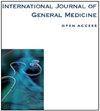The Dosage of Muscle Relaxants in Morbidly Obese Patients in Daily Practice – A Narrative Review
IF 2.1
4区 医学
Q2 MEDICINE, GENERAL & INTERNAL
引用次数: 0
Abstract
Abstract: The prevalence of morbid obesity in today’s population around the world is alarming. Morbid obesity involves substantial changes in body composition and function, which can affect the pharmacodynamics and pharmacokinetics of many drugs. This paper aims to discuss the application of muscle relaxants and their reversing agents in patients with morbid obesity. This work is based both on the available literature and the author’s personal experience. Dosage recommendations for muscle relaxants in morbidly obese patients are as follows: non-depolarizing relaxants like rocuronium, vecuronium, atracurium, and cisatracurium should be based on ideal body weight. Succinylcholine dosage should be adjusted to total body weight with a 200 mg maximum, while mivacurium should also be based on total body weight. Pancuronium is not used due to its long duration. Neostigmine dosing remains uncertain, but some suggest using total body weight. When it comes to Sugammadex opinions of the authors are divided, some indicate that it should be dosed based on ideal body weight, but more recent studies show that it should be based on 40% of corrected body weight.Keywords: muscle relaxants, muscle relaxants reversal agents, succinylcholine, sugammadex, morbid obesity, obese patients
肌肉松弛剂在病态肥胖患者日常治疗中的用量--叙述性综述
摘要:当今世界人口中病态肥胖的发病率令人震惊。病态肥胖涉及身体成分和功能的重大变化,会影响许多药物的药效学和药代动力学。本文旨在讨论肌肉松弛剂及其逆转剂在病态肥胖患者中的应用。本文基于现有文献和作者的个人经验撰写而成。病态肥胖患者使用肌松剂的剂量建议如下:非去极化肌松剂,如罗库溴铵、维库溴铵、阿曲库铵和顺阿曲库铵应根据理想体重使用。琥珀胆碱的剂量应根据总重量进行调整,最大剂量为 200 毫克,而米伐库铵也应根据总重量进行调整。潘库溴铵因持续时间长而不被使用。新斯的明的剂量仍不确定,但有人建议使用总重量。关于舒格迈司,作者们意见不一,有些人认为应根据理想体重来决定剂量,但最近的研究表明应根据矫正体重的 40% 来决定剂量。
本文章由计算机程序翻译,如有差异,请以英文原文为准。
求助全文
约1分钟内获得全文
求助全文
来源期刊

International Journal of General Medicine
Medicine-General Medicine
自引率
0.00%
发文量
1113
审稿时长
16 weeks
期刊介绍:
The International Journal of General Medicine is an international, peer-reviewed, open access journal that focuses on general and internal medicine, pathogenesis, epidemiology, diagnosis, monitoring and treatment protocols. The journal is characterized by the rapid reporting of reviews, original research and clinical studies across all disease areas.
A key focus of the journal is the elucidation of disease processes and management protocols resulting in improved outcomes for the patient. Patient perspectives such as satisfaction, quality of life, health literacy and communication and their role in developing new healthcare programs and optimizing clinical outcomes are major areas of interest for the journal.
As of 1st April 2019, the International Journal of General Medicine will no longer consider meta-analyses for publication.
 求助内容:
求助内容: 应助结果提醒方式:
应助结果提醒方式:


